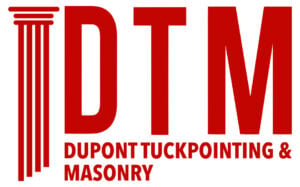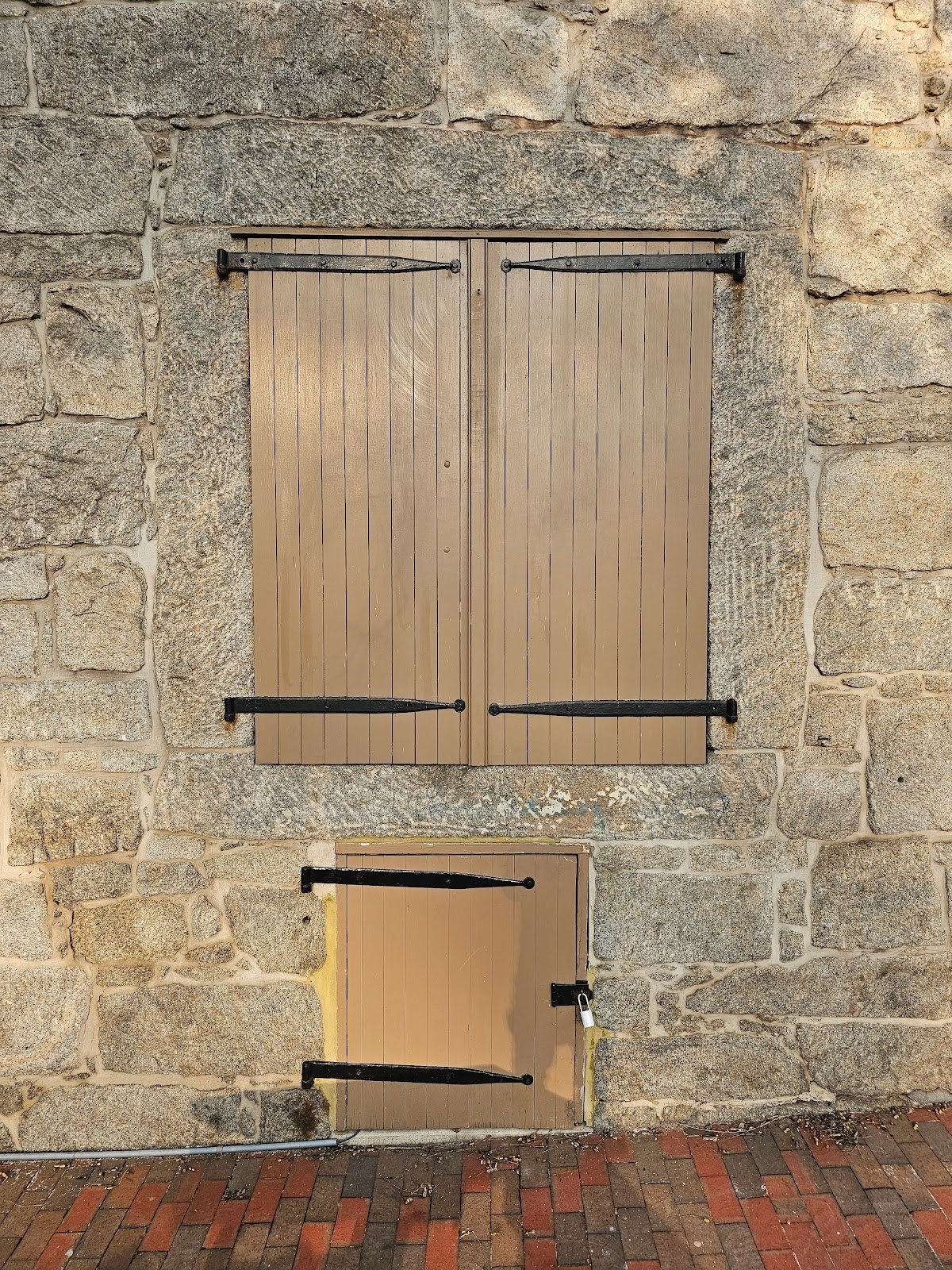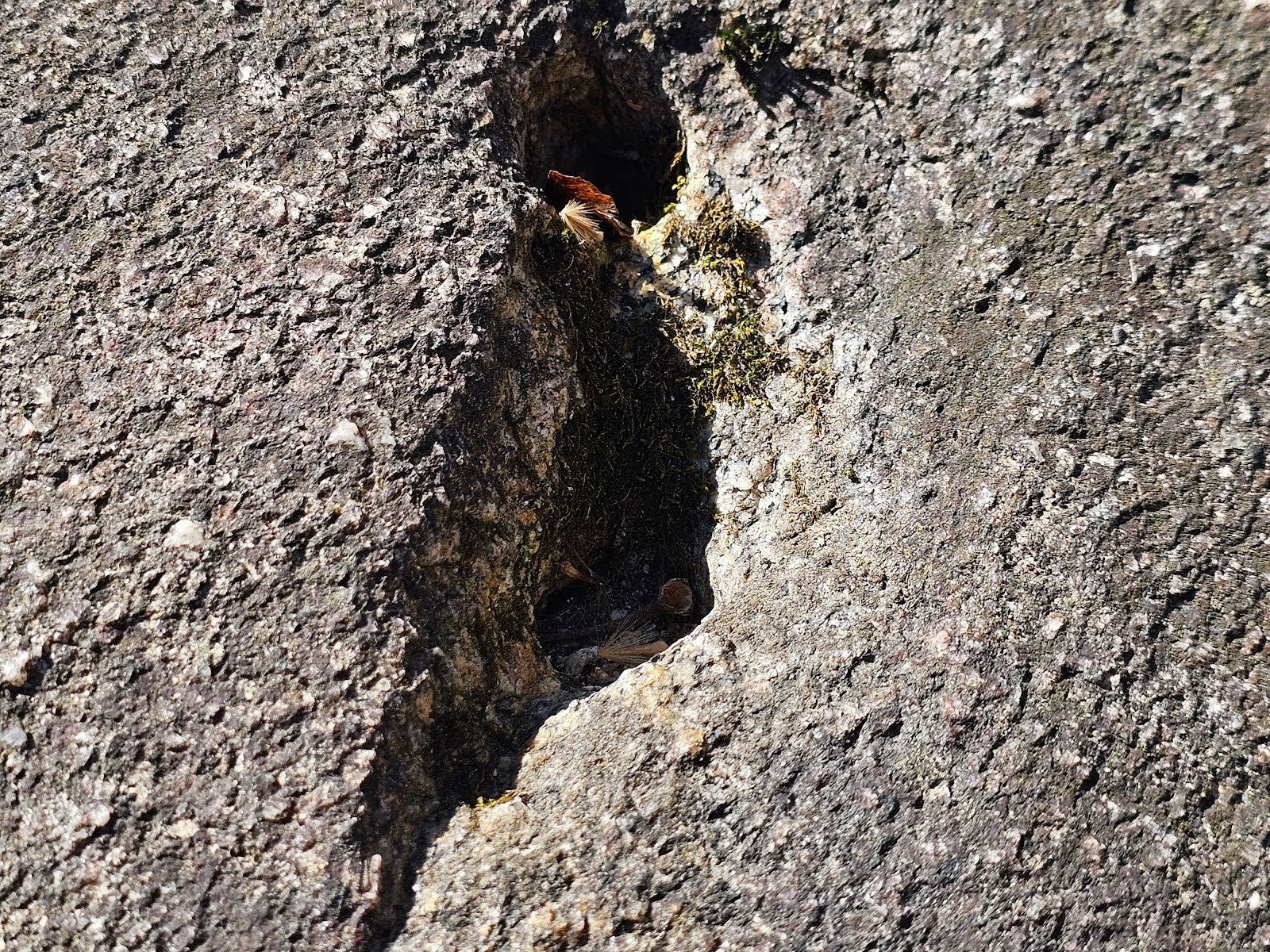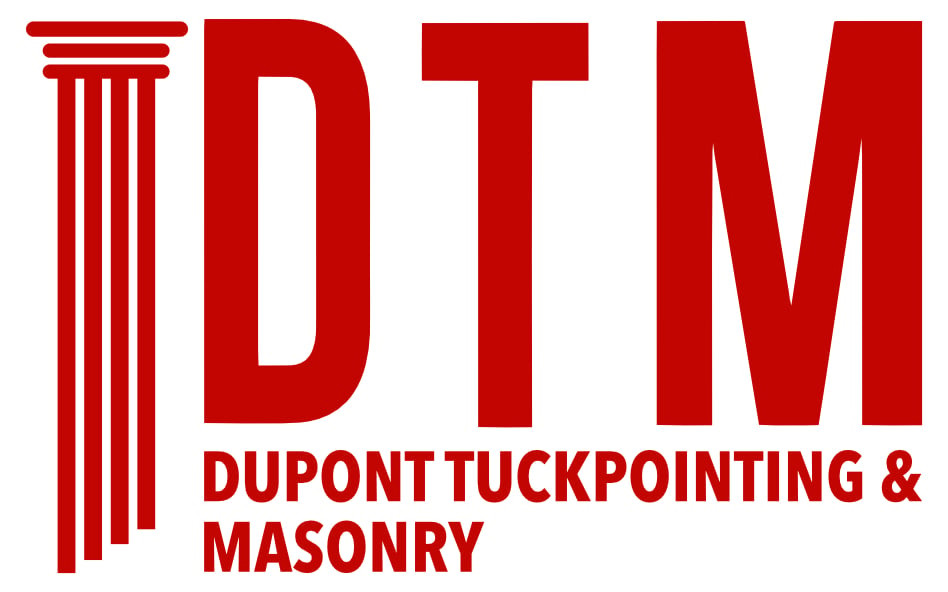Masonry Damage Caused by Water Table Issues
This week, we’re showing a particular building outside yet relatively near to DC. It happens to share many of the same characteristics of historic masonry buildings here in DC. The picture below shows almost the entirety of two of the main building facades of this building. The building, like many buildings in Washington DC is built almost entirely, at the exterior, with historic masonry.
There’s a water table at the top of the front facade. Only a relatively short extension of the brick wall follows beyond and above that water table. Water tables are similar to building gutters on top of historic cornices, here though the water table, although intended to divert water away from the brick facade, is damaged and driving water back towards the facade.
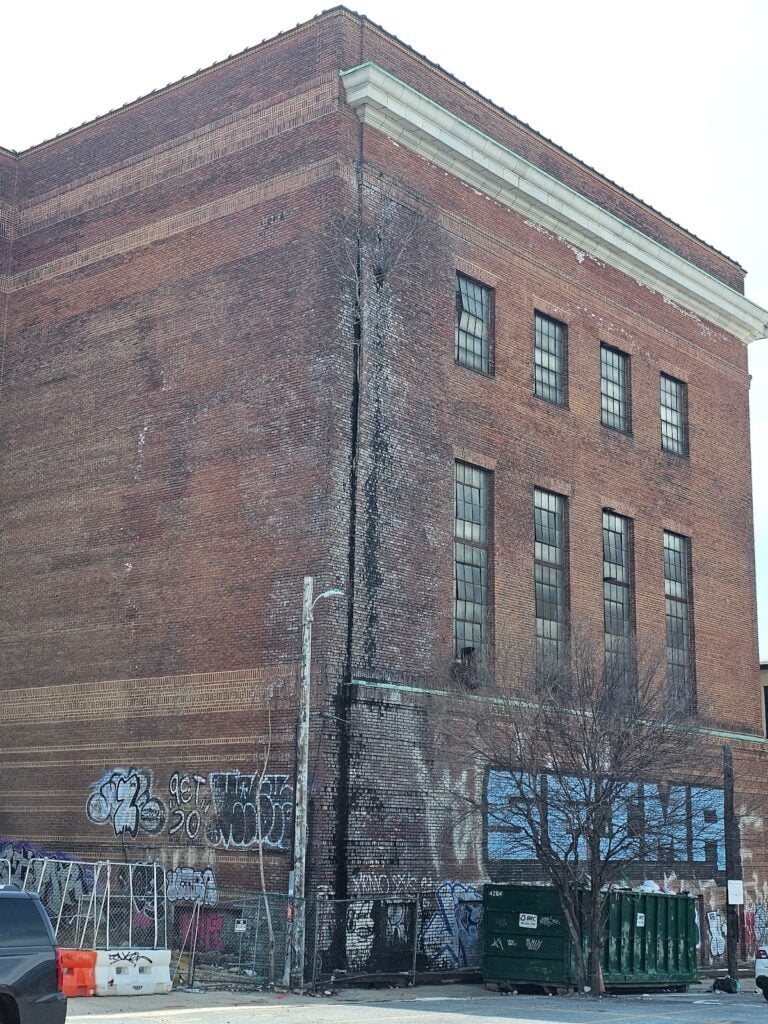
When you look closely, the visual signs are apparent. The front corner, shown in the middle of the pictures above and below, has been highly saturated with water. You can tell both by the darker colored brick at this area, which shows that it’s holding or retaining water inside of the masonry. You can also tell by the shadows or rings of dirt and efflorescence that concentrate around the perimeter of the main area of overhydration.
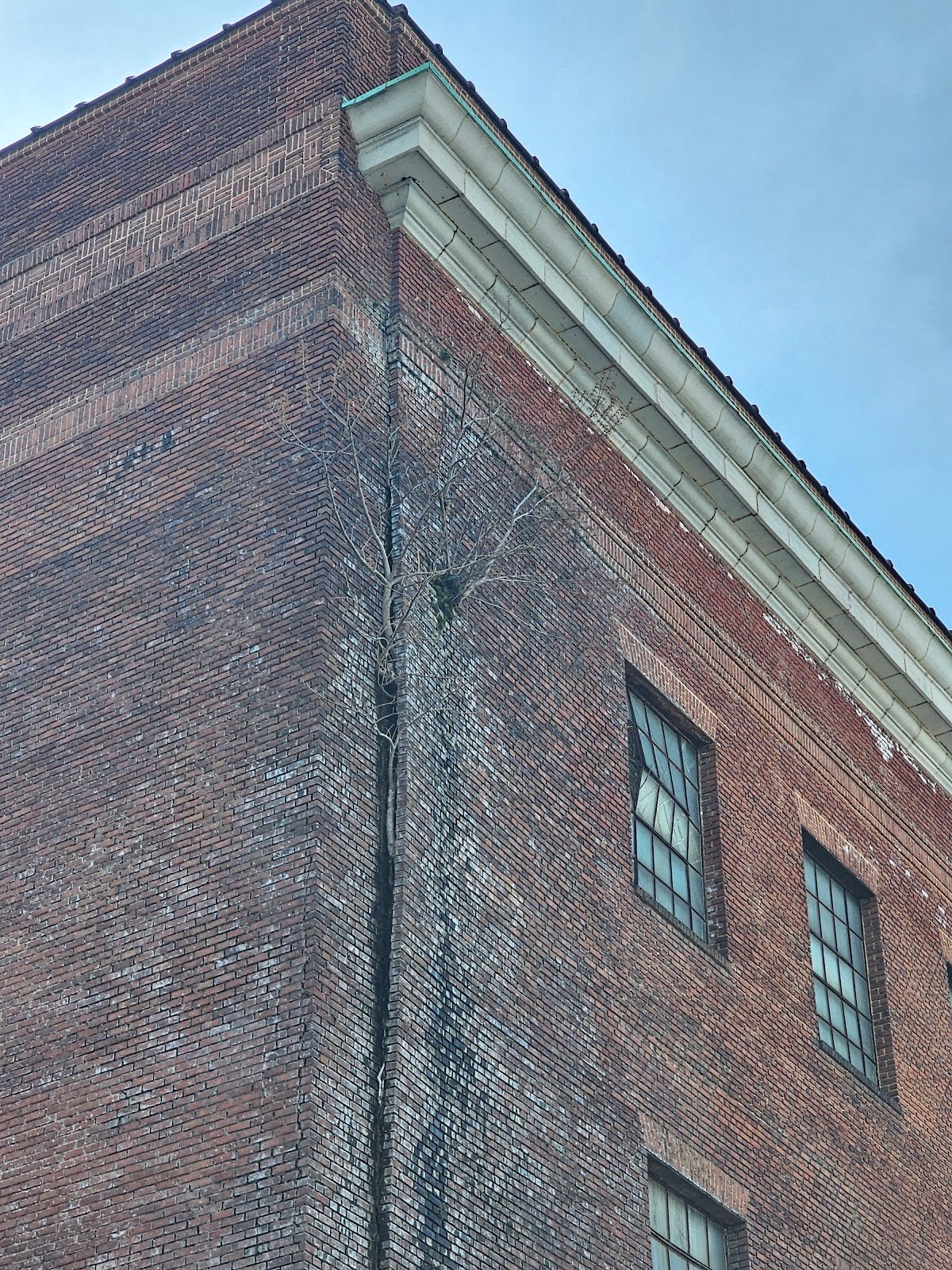
As you get even closer, you can see that there are areas of plant growth or biocolonization in the mortar joints at the inner corner of the front facade and the extending protruding element across the remainder of the facade. This plant growth or bio colonization is a sign, not just that there is a heavy degree of moisture that is affecting this area, but also indicates that the mortar has deteriorated, at least to the point that it allows plants and biocolonization type growth to take root into the face of the mortar and grow on top of the surface of the morrtar.

You can see the stains left by the water as you look straight up the front the side of the wall towards the top. Water trails like this are common on buildings where water is diverted across the facade instead of being properly channeled down the building. When a building is working properly, there should be systems that are built to avoid water running in trails like this.
Where trails happen, either from misdirection or damaged systems that are intended to keep water away, it leads to stains and damage. While defunct systems concentrate and direct water against the facade, you can see the stains left behind. These stains are caused from a mixture of elements that include collected or aggregated debris and dust in the water then deposited against the facade and also mildews and other biocolonization elements that grow in excessively hydrated masonry surfaces.
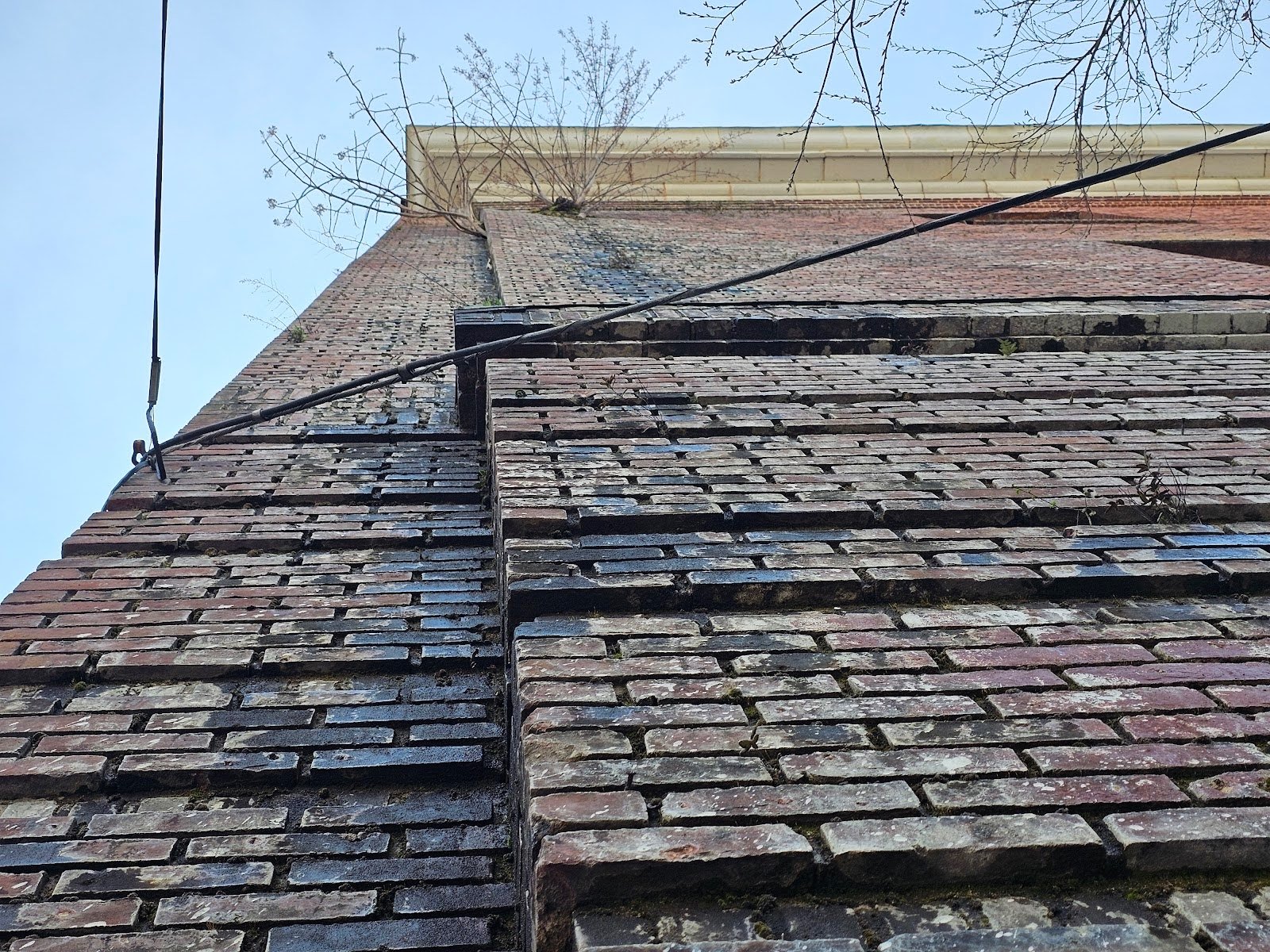
Unfortunately, even while plant growth inside of elements of masonry begins with very small types of organisms, eventually it will lead to increasing sizes of organisms. Here you can see a dandelion plant growing in between the masonry elements. This, although it’s not a tree sapling, is still a complex type of plant that has roots which will cause increasing damage.
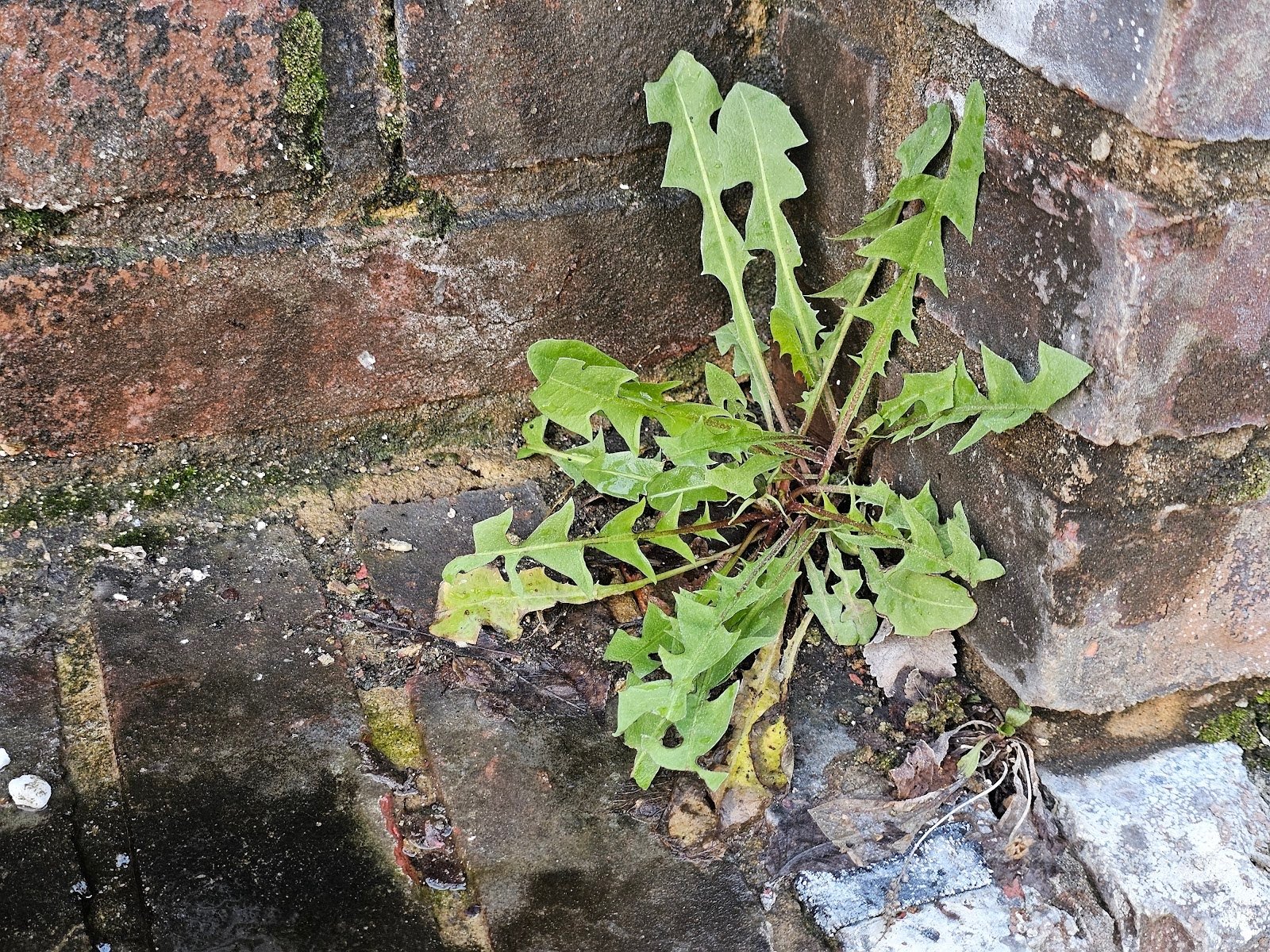
Similar types of plant growth occur along the sills of the building. Sills are projecting elements that are almost horizontal. They occur at openings like door and window openings. They’re intended to project away from the building to provide a ledge which protects the masonry below the opening. When working properly, the water table at the top of the building should do the same thing. When not working properly it can cause significant damage. This damage of course happens very slowly though and therefore is almost more dangerous because as it accumulates over a long period of time it can go untreated allowing the ultimate damage to be worse.
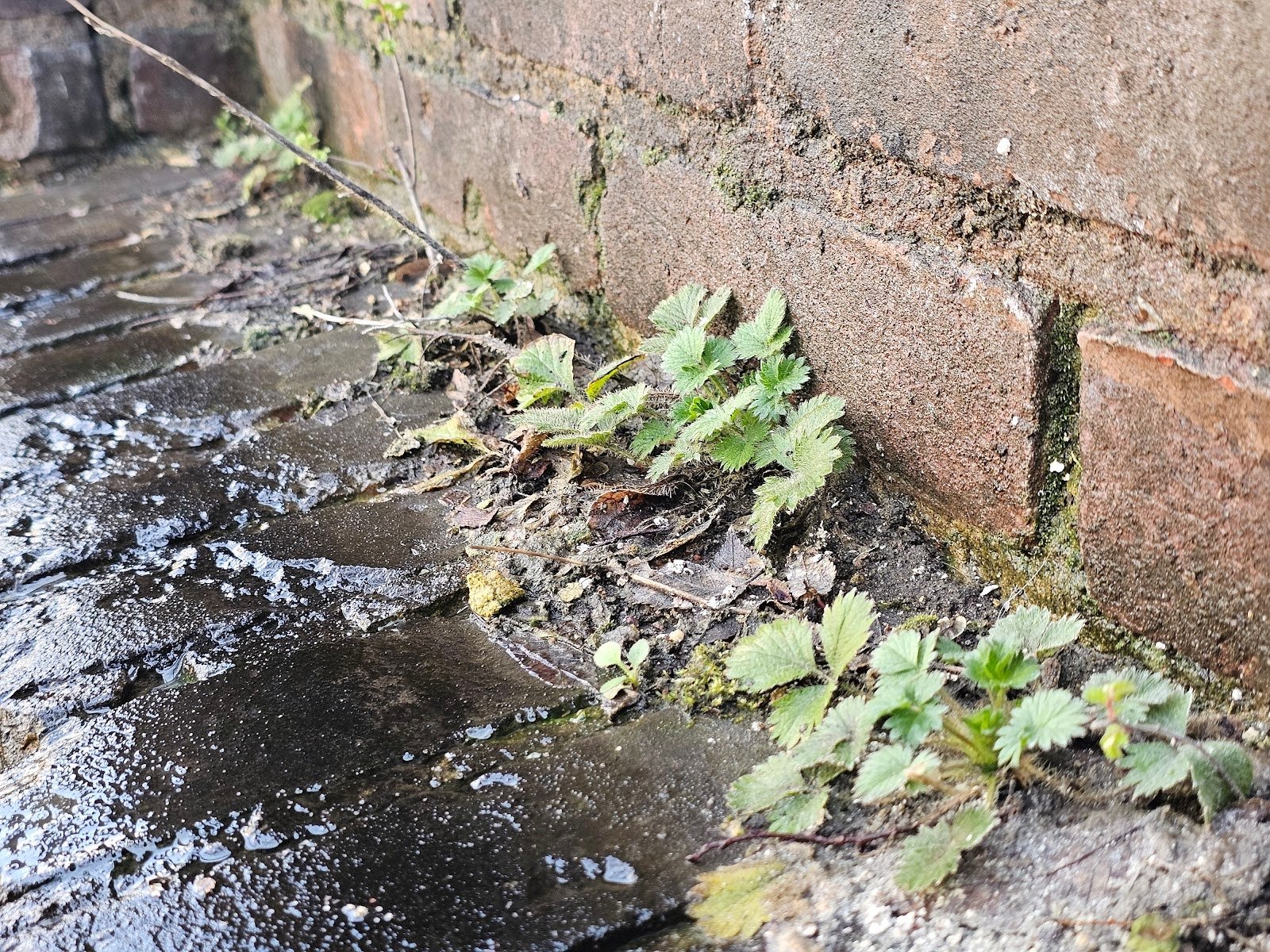
In our next blog, in this upcoming week, we’re going to look at different elements of the building, like headers, and explain the damage that happens over time with excessive hydration. Here, as we explained above, the hydration is not just simply applied for typical weather patterns, but actually concentrated at specific areas of the building. In the picture below, you can see an example of a steel window lintel. That lentil is significantly oxidized because it’s been hit with an inordinate amount of rain water as that rain water is forced down a corner of the building.
As the water disperses, as it flows downward, it hits a slightly wider area as it is essentially being funneled against the masonry facade. These steel lentils, like the susceptible mortar joints, are damaged in an accelerating manner. Exposed steel is basically always at risk when it isn’t properly maintained. Steel needs to be coated at recurring intervals, but here, it not only lacks that regular maintenance, but is exposed to many multiples more of hydration which leads to oxidation that breaks down the structural elements of the steel lintel opening support.
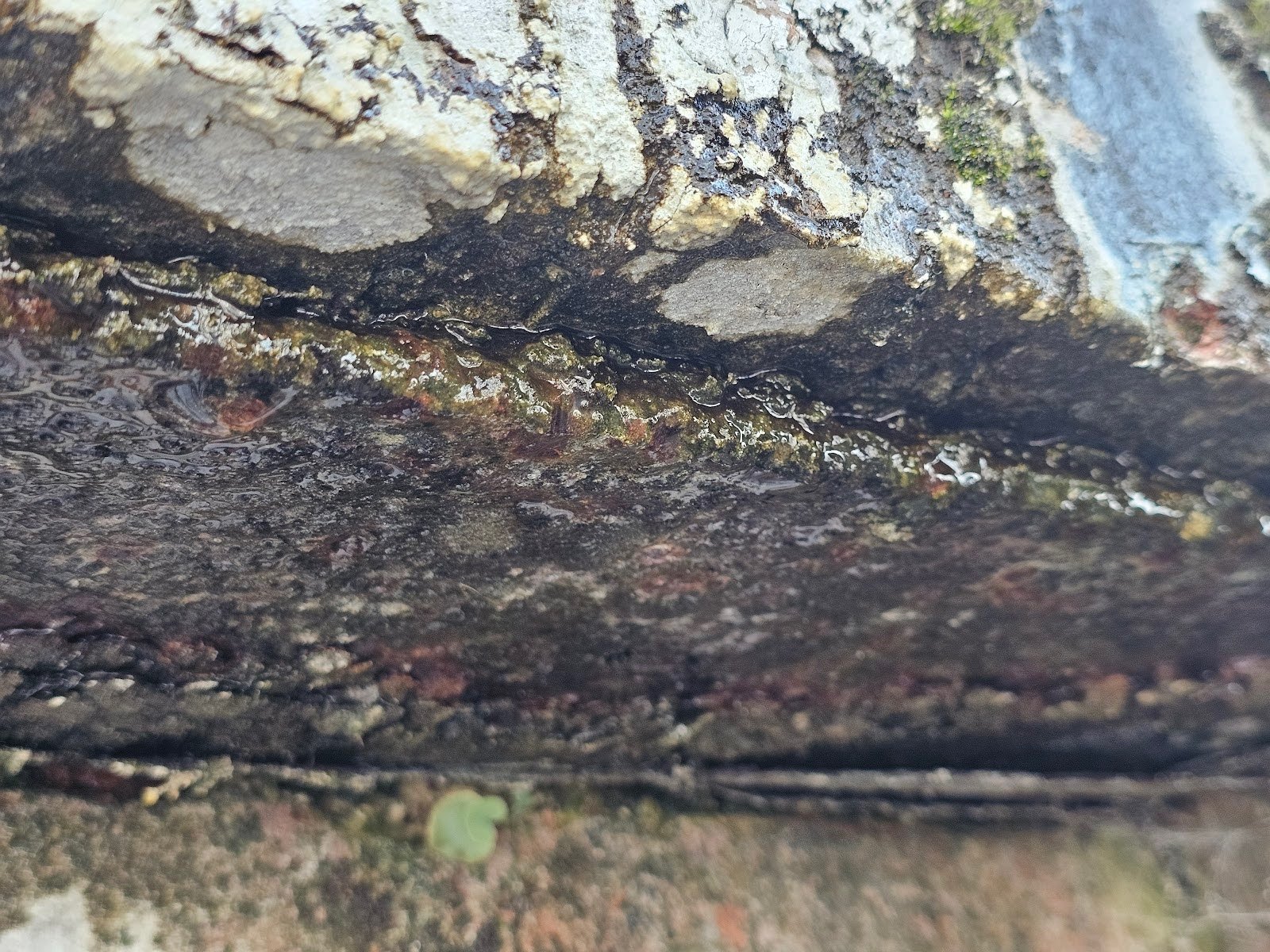
Our company, Dupont Tuckpointing and Masonry, specializes in masonry restoration, historic brick repointing, and tuckpointing services in the Washington D.C. area. These buildings are uniquely historic, and their preservation requires skilled masons who are technically trained in the best practices and knowledge of proper restoration techniques.
We understand the significance of maintaining the architectural integrity of these historic structures, and our team of experienced professionals is dedicated to delivering exceptional craftsmanship. Whether you require masonry restoration, tuckpointing, or brick repointing services, we are here to help.
At Dupont Tuckpointing and Masonry, we take pride in our work and strive to ensure that every project is executed with the utmost care and attention to detail. We are committed to preserving the rich heritage of Washington D.C.’s built environment for generations to come.
If you have any questions or needs regarding masonry restoration, historic brick repointing, or tuckpointing services, please do not hesitate to reach out to us. We would be delighted to assist you and provide you with the expertise and quality workmanship that your historic property deserves.
You can reach us by telephone at (202) 796-7644 and you can reach us by email from the contact form on our website at https://duponttuckpointingmasonrydc.com/contact-us/.
